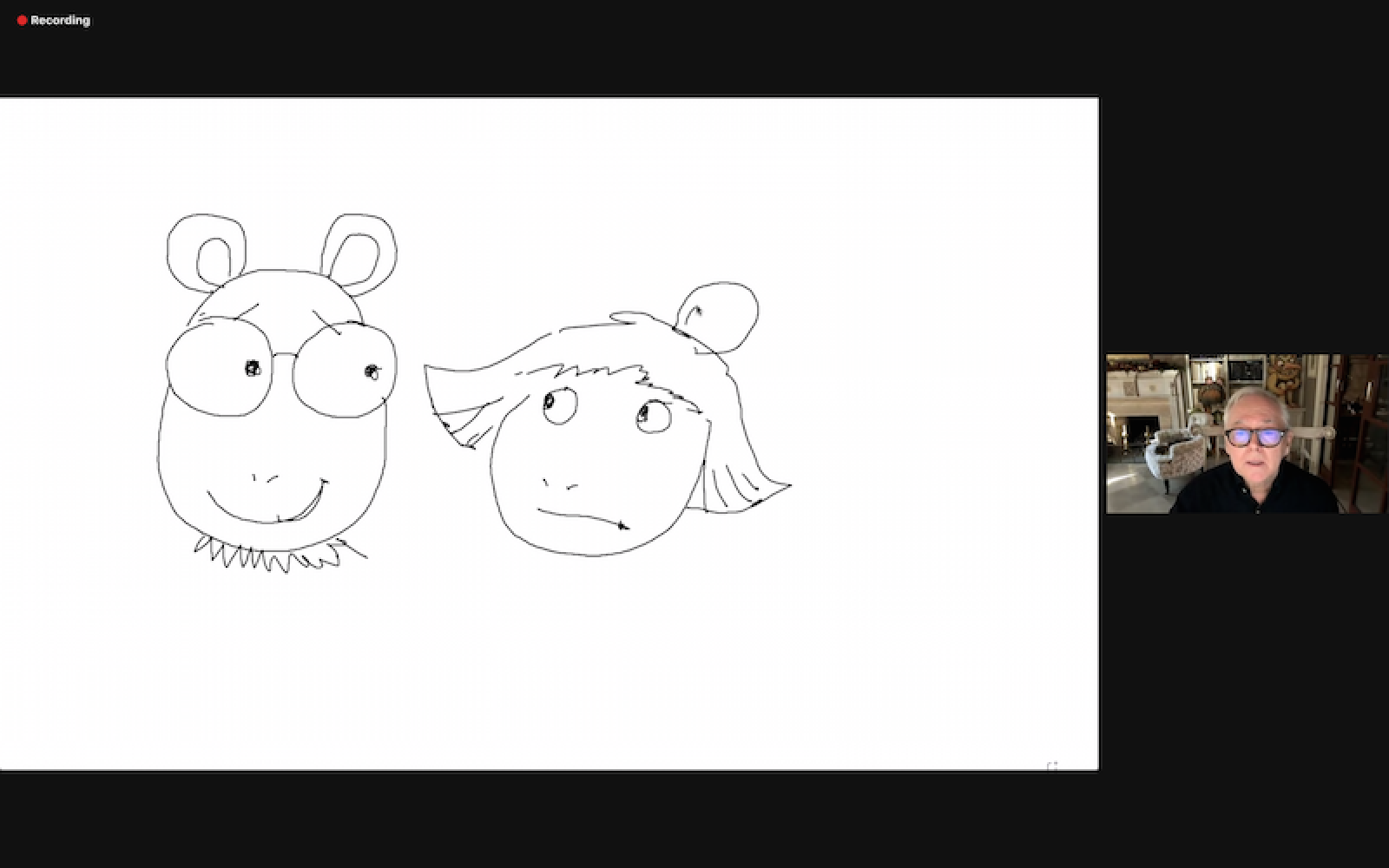Begin with two circles connected by a bridge. Next, loop a larger circle below to form a face, add two ping-pong paddles atop the head for the ears, two small dashes for the nose and finish with a pair of expressive eyebrows — this is author and illustrator Marc Brown’s secret recipe for drawing his world-famous character, Arthur the aardvark.
In a Zoom event with the Martha’s Vineyard Public Charter School Monday morning, the acclaimed storyteller and creator of the award-winning Arthur book and television series looked back at his career in a playful presentation with the elementary school students.
The children’s author and part-time Vineyard resident has penned 140 books as either illustrator or author throughout his career. His stories include Mary McScary and a new book written by his wife, Laurie Krasny, called Democracy for Dinosaurs.
Monday’s virtual event was part of Martha’s Vineyard Community Services Possible Dreams auction. Mr. Brown donated the event to the auction in conjunction with charter school alum Rubin Cronig, who also threw in a hand-engraved Arthur watch with the package. The dream was purchased by West Tisbury resident Mike Bellissimo — a father and self-proclaimed Arthur enthusiast — and given to the charter school.
Addressing the crowd of eager students, Mr. Brown opened his talk with pictures from his childhood in Erie, Pa. Mr. Brown was passionate about storytelling throughout his childhood, he said, recalling days spent looking through books at the public library and listening to his grandmother and great-grandmother tell stories about Ireland.

“My grandma’s stories were filled with great details, and they made you remember them. That’s where I think it started — I was inspired by them and their storytelling. I didn’t realize it would be my job one day, but [stories] made a big impression on me.”
The idea for the first Arthur book came to Mr. Brown in 1976, when he thought up a bedtime story about an aardvark named Arthur for his young son, Tolon.
“I’d lost my job, I was teaching at a small college in Boston, and I wondered what I was going to do next,” Mr. Brown remembered. “Tolon asked me for a bedtime story and out popped this little Aardvark...and that’s how Arthur was born.”
The character of Arthur is a blend of Tolon and Mr. Brown as a young boy, he said. The book’s other vivid characters were inspired by students in Mr. Brown’s third-grade class.
“All of these friends around me became characters in my Arthur books,” he said, showing the charter school students an old class photo with friends who later inspired characters like Buster and the Brain.
Members of Mr. Brown’s family also figure in the series, with his grandmother as Arthur’s grandma Thora and his three younger sisters combining to become Arthur’s sister DW.
The Arthur books have sold more than 64 million copies. The show was also adapted into a PBS television series, now the longest-running children’s animated series after 25 years on the air.
Over the years, Mr. Brown’s career has taken him near and far, he said, recalling the time he was invited to the White House by Barbara Bush and a trip to Russia to represent America in a children’s book festival.
“I have the perfect job. I get to daydream, make up stories and draw and work for you guys. You guys are my boss,” he told the children.
Mr. Brown also cited his home on the Vineyard as a key inspiration, sharing photos of the neighboring farm animals — from belted galloways to a pair of ponies — who have ignited his imagination over the years.
Today, Mr. Brown said he is focusing on an Arthur retrospective book, slated for release next January in honor of the series’ 25th anniversary. Titled Believe in Yourself, the book looks back at many milestones in the series and the author’s career.
Mr. Brown is also currently working with his son Tolon on a television show for pre-schoolers called Hop, as well as a longer-term project about John Brewster Jr., a 19th-century portrait painter with speech disabilities who communicated through art.
In a question and answer period, students asked Mr. Brown about his creative process, his inspirations and, to the author’s delight, his age.
“I doodle a lot and I make a lot of mistakes,” Mr. Brown said of his process. “I think one of the most valuable things you can do to make your stories better is to read them aloud, maybe to your friend or to your brothers, sisters, your parents, someone who will listen.”
Reflecting on his career at the close of the talk, Mr. Brown thanked the educators who encouraged him to pursue his passions. He urged the students to pursue their passions as well.
“This was all made possible by a great teacher, Nancy Bryan, who was my art teacher in junior high and high school,” he said. “I wouldn’t have figured out that I could do stuff like this if I didn’t have a great teacher, so let’s all appreciate our teachers today.”






Comments (3)
Comments
Comment policy »